History, meaning and kinds of tai (seabream)
Various sea bream and dishes in Japan!?
Sea bream (red seabream) is called the king of fish in Japan. This fish is often served in the ceremony because this fish is considered good luck fish. Medetai which means happy includes Japanese name of sea bream "Tai".
This fish is cooked as Sashimi which is fresh slice of it and sushi, konbushime which is a raw fish sandwiched between kelp, Wan-mono which is Japanese clear soup. The best sea bream has no second in the white-fleshed fishes for Japanese. Some Japanese in the west says that nice restaurants must have delicious sea breams.

Japanese ate sea breams from ancient times. The bone of sea bream was found from kitchen midden all over Japan, the bone of one-meter-long sea bream was found in Aomori prefecture. Until Sengoku period (1467-1590), a carp was considered good luck fish because "Koi" which is Japanese name of carp means high position.
However, a sea bream became more good luck fish because "Tai" also means the big position in Japanese. A sea bream is not only for eating but also the shape of New Year's decoration and ornament to bring luck.
The ornament of Shichifukujin which is the seven gods of good fortune is also an ornament to bring luck in Japan. Ebisu which the member of seven gods has sea bream and fishing gears. By the way, most Japanese think that a sea bream is happy fish because Medetai includes tai nowadays. Medetai means happy in English.
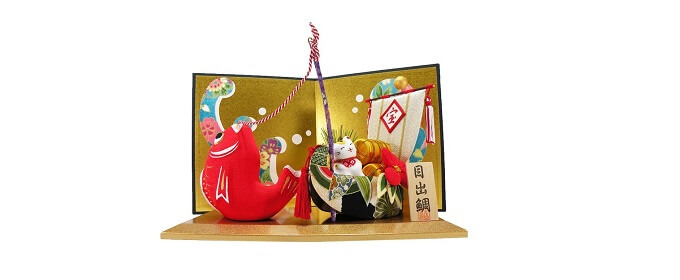
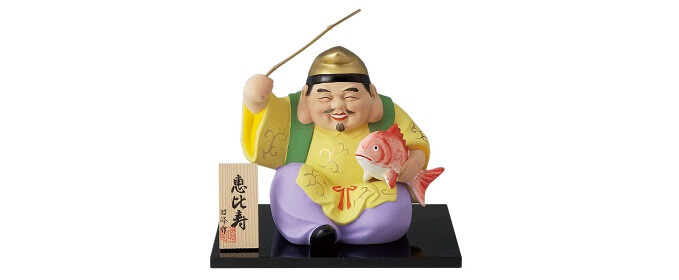
There are over 200 fishes including tai or dai name, but most of them are not a sea bream. The splendid alfonsino which is called Kinmedai is not a sea bream though it is also cooked as sushi or sashimi (sliced raw fish). The popular sea breams in Japan are red seabream, yellowback seabream, crimson sea bream, black porgy (black seabream) and tilefish (butterfish).
The red seabream which is called Madai is the most popular sea bream in Japan. Some red seabreams caught in some area have special name derived from area name. The red seabream caught in Akashi city is called Akashi-dai, in Tokushima prefecture is called Naruto-dai, in Kanagawa prefecture is Satori-dai, in Awaji Island is called Awaji-dai. Akashi-dai is especially popular and high-class red seabream. This fish has better meat than other red seabream because it swims whirling waves from Pacific Ocean to Seto Inland Sea.
The price of red seabream depends on season and size. The price of small seabream is from about 10 dollars to 20 dollars, big seabream is from about 50 dollars to 80 dollars in an average season. The price of it rises from about 100 dollars to 150 dollars in the best season or New Year.
However, the price of it decreases because of farm-raised red seabream. The price of farm-raised red seabream is lower than wild caught of it. The popular dishes of red seabream are sashimi which is slices of raw fish and Yakizakana which is a grilled fish.
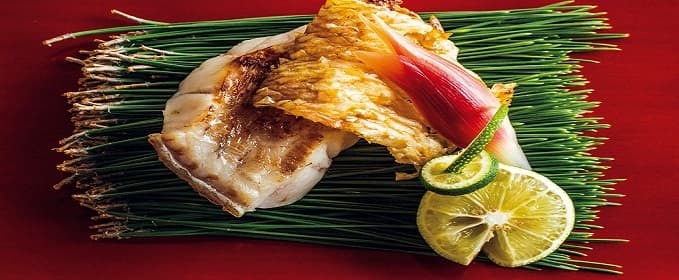
The best season of red seabream is spring or autumn though it is delicious throughout the year. It caught in the spring is called Sakura-dai derived from cherry blossom which is called Sakura in Japan. The taste of it is delicious because it is fatty for preparing spawning.
It caught in the autumn is called Momiji-dai derived from leaves of Japanese maple which is called Momiji in Japan. The taste of it is delicious because it is fatty for preparing hibernation. On the other hand, it caught in the summer is called Mugiwara-dai derived from barley. The taste of it is not very delicious because it just finished spawning.
The yellowback seabream is called Ki-dai derived from its color, Ki or Ki-iro means yellow in Japan. It is also called Renko-dai derived from longlining. It is popular in the west of Japan including Kyoto and Osaka since it caught only in there. Its role is a substitute for red seabream because of low cost. On the other hand, it is not popular in the east of Japan including Tokyo. The red seabream is more popular than yellowback seabream in the east of Japan.
The popular dishes of yellowback seabream are grilled fish, boiled fish, vinegared fish and hot pot. The best dish is grilled it because its meat is very soft. Therefore, a grilled whole yellowback seabream is often served in a wedding. A grilled it is also served for lunch box for ceremony. A vinegared it is cooked with especially small of it, and served as sushi. The best season of yellowback seabream is spring or autumn. The price of it is lower than the price of red seabream, but is rising little by little because the catch of it is decreasing.
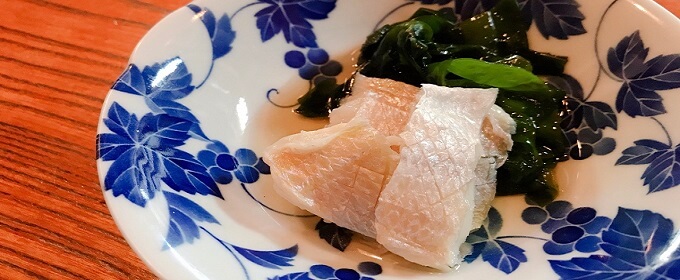
The crimson seabream is called Chi-dai or Hana-dai in west of Japan. It is one of the three red color seabreams with red seabream and yellowback seabream. The price of it is lower than red seabream, but higher than yellowback seabream. The reason of that is not only its taste but also its best season. Summer is the best season of crimson seabream, and is bad season of red seabream and yellowback seabream. The crimson seabream is valuable among restaurants for serving it in ceremony. The best dish of it is grilled it or sushi.
The black porgy (black seabream) is called Kuro-dai, kuro means black in Japan. It is popular among fishermen because it lives sea around the urban area. In addition, there are other reasons, various methods to fish it, fishing an over 50cm of it in shallow area. The price of it is the lowest of the seabream because the catch of it is big and farming it.
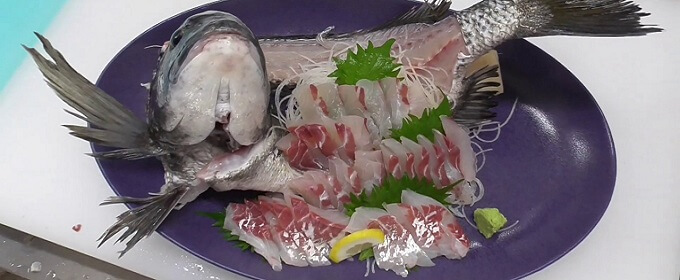
The taste of it is chewy and light. Some Japanese say that the taste of it in winter is as delicious as the taste of red seabream. On the other hand, some Japanese say it has too ocean smell as seabream. It is cooked as sashimi, grilled it, boiled it. Seasoned rice with it called Chinu-meshi is popular around Seto Inland Sea area.
The tilefish (butterfish) called Ama-dai is an expensive seabream in Japan. The price of it is over 10000 yen per 1kg (about 100 dollars per 2 pounds). It is often eaten in high class Japanese-style restaurants in Kansai area including Kyoto. Kyo-ryori which is local cuisine of Kyoto does not consist without it. The dish of it needs to skill of chef because its meat is very soft and juicy. The best season of it is summer or early autumn. The popular dishes of it are grilled it, tempura and clear soup.
There are various dishes with seabream in Japan, sushi, seasoned rice with it, grilled it, boiled it, soup, hot pot and more. Tai-chaduke is boiled rice and seabream soaked with tea. Shio-gama-yaki is roasted seabream coated with lots of salt. Tai-somen is noodles with boiled or grilled seabream.
You can enjoy various seabream dishes when you travel Japan. If you like sushi and conveyor belt sushi restaurant, you can invest it. Food and life companies (TYO:3563) and Kura Sushi Inc (TYO:2695) are listed in Tokyo Stock Exchange. If you like Japanese seabream, you can invest Kyokuyo Co. (TYO:3563) which is the largest fishery company in Japan. These companies are also included some ETFs for investing Japanese companies.
- There are various octopus and octopus dishes!?!?
- Tamago was eaten from the Edo period!?
- 3 types of scallop sushi in Japan!?
- Various kinds of uni and dishes in Japan!?
- Engawa is derived from Japanese architecture!?
- Gari is well known as appendage to sushi!?
- Various sea bream and dishes in Japan!?
- Kanpyo-maki is is one of the sushi for finishing off!?
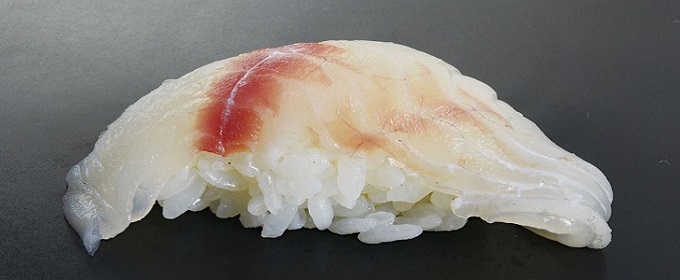
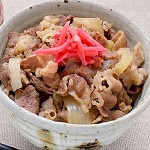 Gyudon
Gyudon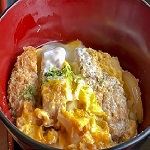 Katsudon
Katsudon Unadon
Unadon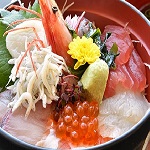 Kaisendon
Kaisendon